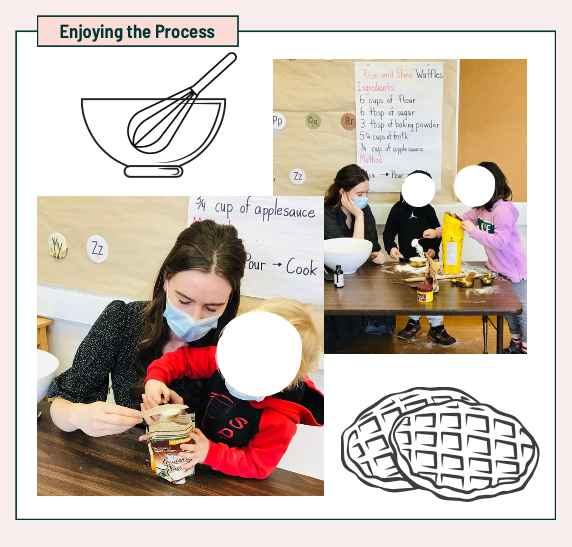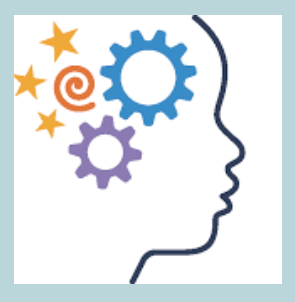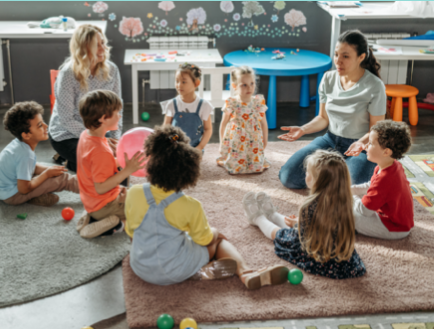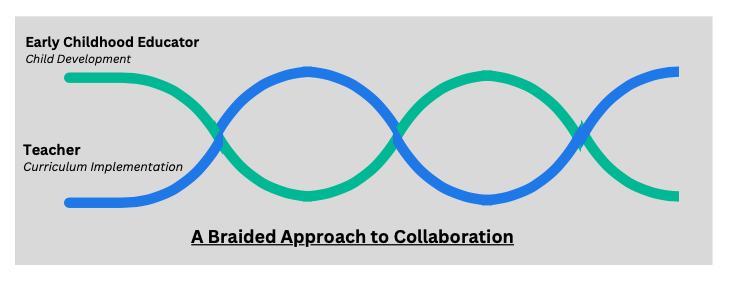To Outline the Importance of a Sense of Belonging in the Classroom Community
In Kindergarten, children spend approximately six hours each day immersed in their school environment, interacting with teachers, peers, and supportive adults. Within this setting, they establish routines, acquire new skills, form friendships, and create lasting memories alongside an average of 20 other children their age (Becker & Mastrangelo, 2017). Their Classroom Community serves as a nurturing environment where they can thrive and grow. It has been long understood that a strong classroom community is significant in early years education environments (Lash, 2008) As an educator, I am dedicated to cultivating a warm and inclusive classroom environment. Throughout my MEd program, I have explored various aspects of classroom community through research from how colour effects community, the role of the educator, the environment, and social emotional learning. The artifacts presented below illustrate how partnerships with adults, hands-on activities, and social-emotional learning practices can enhance and foster a sense of belonging within the classroom community.
Artifact 1: Teacher + ECE Relationship
During my time as a Kindergarten teacher, I've been intrigued by the dynamic relationship between Early Childhood Educators (ECEs) and Kindergarten Teachers; I have worked in a team teaching environment for three years alongside an ECE and another teacher respectfully. I have had the opportunity to experience how critical a strong partnership is in order to model collaborative learning and create a cohesive classroom environment (Stein, 2021)
When I began in this role, I wondered the distinct roles of each individual and how their differing philosophies of early childhood education might intersect. The teacher and ECE are encouraged to work together while the teacher focuses on curriculum implementation and the ECE on development. Both are collaborating to support the development of the children (Becker & Mastrangelo, 2017). So, one might assume that sharing this responsibility would streamline the process. However, in my experience, this shared responsibility often presents challenges in establishing a cohesive environment and can significantly impact the classroom dynamic.
In Ontario, with the introduction of the Full Day Kindergarten program, the collaborative partnership between teachers and ECEs became not only recognized but also expected. While this partnership was embraced, the critical examination of what this relationship should entail was sometimes overlooked (Wisneski & Goldstein, 2004). This artifact created during our ECED 533: Leadership and Policy in Early Childhood Education course explore the ways that the ECE and teacher relationship can flourish ultimately creating a warm, inviting, and collaborative environment all essential to create a sense of belonging for everyone.
Artifact 2: Connecting Through Shared Experiences
Fostering an environment where collaborative learning takes place has always been important to my pedagogy. I aim for my classroom to embody a sense of teamwork, where students not only work and play together but also feel that their ideas, opinions, and thoughts are valued and respected. Embracing collective experiences is integral to my teaching philosophy, and I've discovered that cooking and baking offer an ideal platform for children to engage in shared tasks. From baking a friendship apple pie, salt doughs diya lamps, cinnamon ornaments, and waffles during COVID-19 after a virtual field trip, I have been able to see and experience a sense of belonging alongside my students in all these experiences. These shared memories and moments not only strengthen our classroom community but also deepen the children's connection between home and school.
Hedges et al. (2011) emphasize how exposure to diverse experiences can enrich children's funds of knowledge, particularly when they have opportunities to observe, participate, and practice. Baking, in particular, provides these opportunities while simultaneously fostering qualities like patience, sharing, and following directions. All qualities that can assist children to be kind, loving, and polite members of their community. Many of the children in my classes have prior experience with baking or cooking at home, evident in their enthusiasm for activities like pretending to cook in the mud kitchen during recess or creating miniature meals during lunchtime. The conversations sparked during our baking lessons extend throughout the day, with children applying the same skills and knowledge during playtime. They often draw connections between their home cooking experiences and our classroom activities, offering insightful tips on completing specific steps.
This artifact is a reminder of Lev Vygotsky's (1978) concept that learning is not confined to individual minds but rather occurs through shared interactions and play, underscores the importance of meaningful relationships and experiences during a child's early years. Each experience contributes to the overall structure of the nest similar to how each community that a child is apart of also contributes to the structure of a nest of togetherness.
Artifact 3: Tools of the Mind
This artifact is from our Supporting Young Children's Social Emotional Learning in Early Childhood Programs course explores the program Tools of the Mind. It provides professional development and explores the ways that teachers can implement social emotional learning through play and dramatic play. Tools of the Mind (1993) highlights the ways that teachers can foster an inclusive environment that promotes and proactively teaches social emotional learning. Furthermore, this program provides children with an opportunity to learn important skills to help them enjoy collective experiences and “collect a twig” to weave into their nest of togetherness.
Studies show that social-emotional skills, such as problem-solving, self-regulation, impulse control, and empathy, help create learning opportunities, reduce negative social behaviours like bullying, and create positive classroom environments (Elias et al., 1997) Tools of the Mind focuses on teaching teachers to help students build cognitive, social-emotional, self-regulatory, and foundational academic skills to succeed in their early years and beyond. Based on Vygotsky’s theory that children can learn together and provide guidance and encouragement to each other to master new skills. The use of this program can encourage a communal and cohesive classroom that prioritize social emotional well-being.




